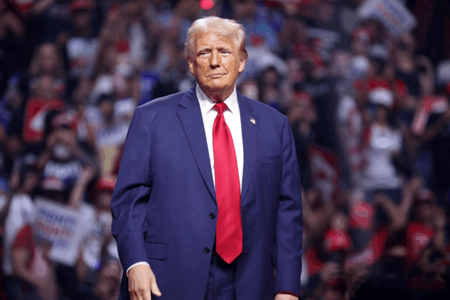
When former President Donald Trump first floated the idea of sending $2,000 dividend checks to nearly every American family, the announcement made headlines across the country.
Supporters were optimistic, critics were skeptical, and economists began dissecting the numbers. But this week, after months of vague statements and unanswered questions, Trump finally offered the first concrete timeline for when such payments might actually reach American households.
The answer — 2026 — only opened the door to even more questions. The concept sounds simple on the surface: tariffs generate federal revenue, and that money is then redistributed to qualifying households.
But as Trump’s own administration officials, fiscal analysts, and legal experts have pointed out, the reality behind this policy is far more tangled, far more uncertain, and far more dependent on outside forces than the initial announcement suggested.
To fully understand the plan — and why it remains both ambitious and deeply contested — it’s necessary to break down the political backdrop, the economic mechanics, the legal obstacles, and the public reaction that have brought the country to this moment.
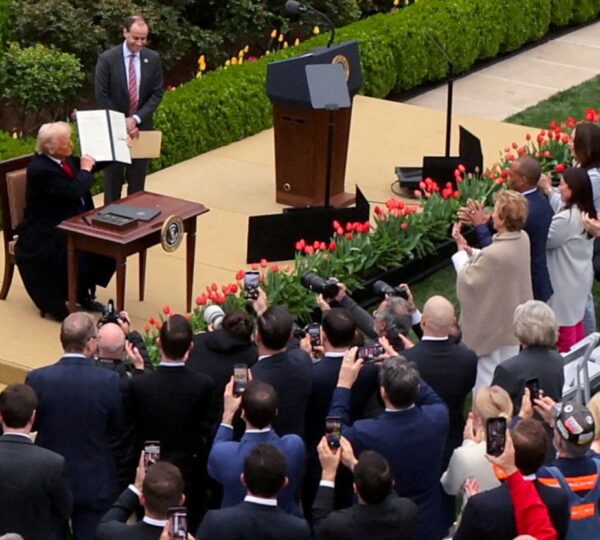
A Plan Rooted in Tariffs — Trump’s Signature Economic Weapon
Tariffs have been central to Trump’s economic doctrine since the first days of his presidency. He has long argued that the United States was taken advantage of by global trading partners — most notably China — and that tariffs would act as corrective measures that both punish foreign competitors and reinforce American industry.
Over the past several years, tariffs under Trump generated tens of billions of dollars, reshaping trade balances, raising import prices, boosting certain manufacturing sectors, and prompting retaliatory moves by countries around the world. But the defining new chapter of this tariff strategy was Trump’s announcement that tariff revenues would now be used to create what he described as a “national dividend” — a direct payment program to American households.
In his Truth Social posts, Trump framed the idea as a natural extension of America’s renewed global economic strength: “People that are against Tariffs are FOOLS! With Almost No Inflation, and a Record Stock Market Price… We are taking in Trillions of Dollars.”
He argued that the economic gains made possible by tariffs would justify sending at least $2,000 per qualifying adult. But even Trump’s supporters noted at the time that major parts of the plan were unclear — including eligibility cutoff, total cost, funding structure, and legal authority.
Still, the idea of a universal or near-universal payout resonated. Many Americans, still recovering financially from inflation, high interest rates, and market volatility, viewed the proposal as a welcome cushion.
The Announcement That Shifted the Timeline: “It Will Be Next Year”
Earlier this week, speaking aboard Air Force One, Trump finally confirmed a date — or at least a year — for when the payments could realistically begin. “It will be next year… We’re going to do a dividend and we’re going to be reducing debt.” The date: 2026.
This was the first time Trump publicly acknowledged that the rollout would not be immediate — not during 2024, not during 2025, but the following year. And he made this statement even as political discussions around tariffs continue at full speed, and while several legal battles surrounding his tariff authority remain unresolved.
But why 2026? The answer, as experts quickly pointed out, lies in the staggering complexity of the plan itself.
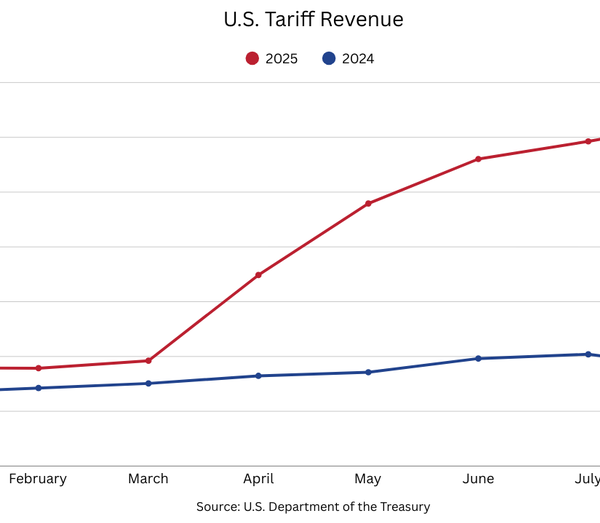
Treasury Secretary Scott Bessent: “We Need Legislation for That”
During a Fox Business interview, Treasury Secretary Scott Bessent cautiously addressed the practicality of Trump’s dividend plan. While acknowledging that the administration sees the payout as desirable, Bessent reminded viewers that the federal government cannot simply distribute money without congressional approval.
His comment was direct: “We will see… We need legislation for that.” This was a reminder that tariff revenue — even if substantial — does not automatically translate into programmable spending. Congress must approve any direct payment program, including defining:
-
Who qualifies
-
How much they receive
-
How funds are distributed
-
Which agency administers the payments
In other words, even with tariff money available, the federal government cannot forward checks until Congress gives explicit approval.
What We Know (and Still Don’t Know) About Eligibility
One of the biggest unanswered questions revolves around income limits. Will the payments be universal? Restricted to lower-income workers? Based on household size? Bessent’s earlier reference to a $100,000 income threshold sparked widespread discussion, but he later clarified that this was merely an internal idea — not a finalized policy.
Still, economists have run projections:
-
If adults under $100,000 qualify → approx. 150 million people impacted
-
Estimated cost → about $300 billion
That is a massive federal investment — although still significantly lower than the cost of programs like pandemic-era stimulus checks. But even the simplest projections rely on tariff revenue that may or may not be available in the future.
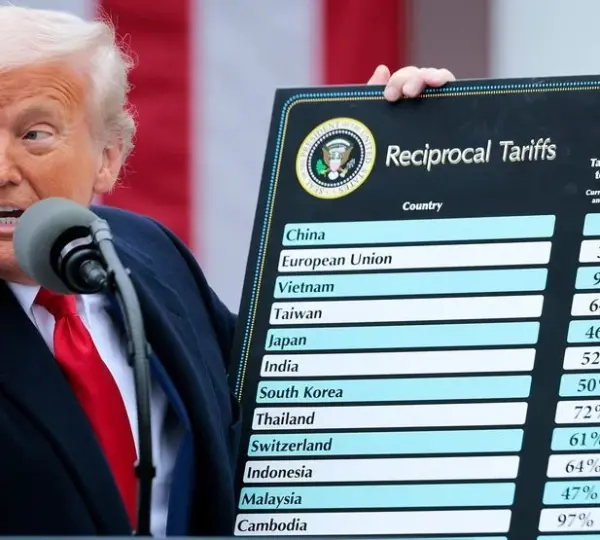
How Much Tariff Revenue Exists Today?
According to updated reports from U.S. Customs and Border Protection:
-
Tariffs issued under Trump’s IEEPA authority generated about $90 billion through late 2025.
-
Trump’s full tariff portfolio generated $195.9 billion in fiscal year 2025 alone.
These are substantial sums — but still potentially insufficient to cover a nationwide dividend if the eligibility pool remains broad. Economist Erica York noted: “Restricting payments to under-$100,000 households costs around $300 billion.”
Meaning: tariff revenue alone cannot sustain such a program, unless:
-
Payments are distributed in phases,
-
Eligibility is narrowed,
-
New tariffs are introduced, or
-
Additional funding sources supplement tariff income.
This leads to the next challenge — the courts.
The Supreme Court Could Block the Entire Plan
Perhaps the most significant hurdle to Trump’s $2,000 dividend involves the legal status of the tariffs themselves. Multiple lawsuits have challenged Trump’s use of the International Emergency Economic Powers Act (IEEPA) to impose certain tariffs, arguing that the statute does not provide authority for broad economic restrictions unrelated to national emergencies.
Three lower courts have already ruled Trump’s tariffs under that law illegal. The Supreme Court has since taken up the case — and the justices have expressed skepticism. If the Court rules against Trump:
-
The tariffs could be dismantled
-
The federal government might need to refund up to tens of billions in tariff revenue
-
The dividend program could lose its primary funding source
-
A key pillar of Trump’s economic agenda could collapse
When asked what he would do if the Supreme Court removed the tariff funding mechanism, Trump responded: “Then I’d have to do something else.” He did not elaborate on what that “something else” would be.
Political Stakes: Why This Plan Matters Right Now
Regardless of where one stands politically, there is no question: Trump’s tariff dividend proposal has become an influential part of national economic discussion. To Trump’s supporters, the idea symbolizes:
-
Returning wealth to American workers
-
Reshaping global trade
-
Reducing dependence on foreign manufacturing
-
Using tariffs to strengthen national financial stability
To his critics, the plan represents:
-
Overreliance on uncertain revenue streams
-
Legal overreach
-
Lack of fiscal clarity
-
A politically motivated promise that may prove impossible to fulfill
Between these opposing viewpoints lies a central reality: millions of Americans are listening, hopeful for financial relief in an uncertain economy. As the debate intensifies, the nation finds itself at a crossroads. The question is no longer simply “Will Americans get the $2,000 checks?” but rather “What conditions must be met for this program to become reality — and what forces may stop it before it ever begins?”
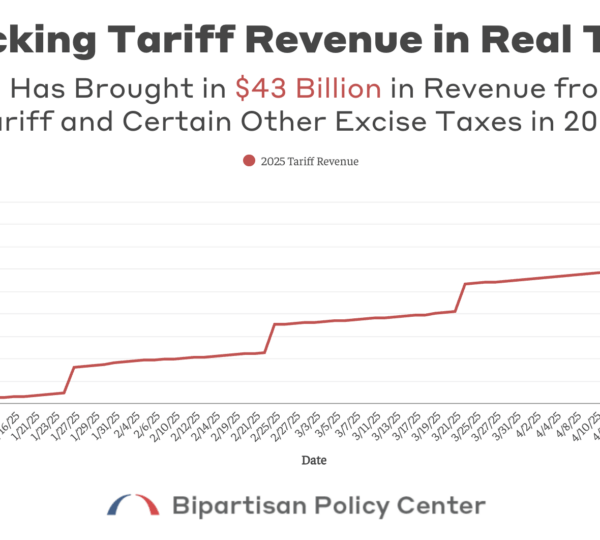
To understand the full trajectory of Trump’s controversial but ambitious plan, we must break down the possibilities ahead, exploring every outcome — from the most optimistic scenario to the most legally restrictive.
I. The Economic Road Ahead: Can Tariff Revenue Really Support a Nationwide Dividend?
One of the biggest mysteries surrounding Trump’s proposal is whether tariffs can generate enough revenue to sustainably fund a large-scale payout program.
1. The Best-Case Scenario: Rising Tariff Revenue and Strong Markets
In the most optimistic version of events:
-
Tariff revenue continues climbing.
-
China and other countries comply rather than retaliate.
-
Manufacturing growth increases domestic employment.
-
The stock market remains strong.
-
Consumer prices remain steady.
If this ideal scenario unfolds, Trump’s administration could justify redirecting a portion of tariff income as direct payments to households — while still claiming fiscal responsibility. Under this outcome, dividend checks could:
-
Boost consumer spending
-
Strengthen Trump’s political standing
-
Demonstrate a new model of tariff-based economic redistribution
This is the scenario Trump describes when he says the U.S. is becoming the “richest, most respected country in the world.” But experts warn that this is the best possible scenario — not the most likely.
2. The Middle Ground: Tariffs Generate Money, But Not Enough
Economists across the political spectrum acknowledge a crucial fact: Tariffs can produce revenue — but the amount is dependent on multiple factors including:
-
Import volume
-
Consumer demand
-
International supply chains
-
Retaliatory tariffs
-
Global shipping conditions
-
Domestic production capacity
Even with $195.9 billion generated in tariff revenue during fiscal year 2025, this income must first cover:
-
Federal obligations
-
Existing trade programs
-
Administrative costs
-
Increased operational expenses linked to customs enforcement
Only then can remaining funds be allocated toward new initiatives like dividend checks. In the middle-ground pathway:
-
The dividend might become smaller
-
Payments might be less frequent
-
Eligibility might be tighter
-
Checks might be distributed regionally or in phases
This pathway keeps the program alive — but in a limited, scaled-back form.
3. The Worst-Case Scenario: Legal Collapse and Revenue Shortfalls
The darkest scenario involves two simultaneous threats:
A) The Supreme Court declares Trump’s IEEPA tariffs unconstitutional
If this happens:
-
The tariffs are dismantled
-
Revenue disappears overnight
-
The government could be required to refund billions
-
Congress may be forced into emergency sessions
B) International backlash and trade retaliation escalate
Countries like China, Mexico, Canada, and the EU could:
-
Impose counter-tariffs
-
Restrict imports
-
Shift supply chains
-
Reduce trade volume with the U.S.
Reduced import volume equals reduced tariff revenue. If both A and B occur simultaneously, the dividend checks collapse entirely — even if Trump still wants them. This possibility explains why Trump himself admitted: “Then I’d have to do something else.” A rare acknowledgment of uncertainty from the former president.
II. The Legal Maze: What Congress and the Courts Will Decide
The most powerful forces shaping the future of the tariff dividend are not economic — they are legal and legislative.
1. Congressional Approval Is Mandatory
Financial analysts repeatedly emphasize that Congress must vote to establish any payment program, regardless of how the money is sourced.
This means:
-
Republicans must unify
-
Democrats must cooperate (or at least avoid blocking)
-
Both chambers must agree
-
The bill must pass budgeting committees
-
Oversight agencies must define eligibility rules
Even basic questions — who gets the check, when, how, and through what agency? — remain unanswered without congressional action.
2. The Supreme Court’s Ruling Will Be Foundational
The Court’s upcoming decision on Trump’s IEEPA tariff authority will determine whether:
-
The tariffs remain intact
-
The government must refund prior collections
-
Future tariffs require congressional authorization
-
Revenue can be used for social programs
In other words: the court’s ruling could either stabilize or completely dismantle the foundation of the dividend program.
III. Public Reaction: Supporters Cheer, Critics Warn, and Independents Wait
Trump’s dividend plan has polarized voters across the political spectrum.
Among Supporters:
-
Many see this as a form of “economic justice.”
-
They believe tariffs are finally benefiting American families directly.
-
They view the checks as a reward for American workers.
-
They trust Trump’s confidence in the country’s financial strength.
Among Critics:
-
Economists warn that tariffs raise consumer costs.
-
Democrats argue the plan is financially unrealistic.
-
Legal scholars question tariff authority.
-
Some view the payments as election-influenced promises.
Among Independents and Young Voters:
This group is surprisingly receptive. Many younger adults burdened with:
-
rent
-
car payments
-
student debt
-
rising food prices
-
uncertain wages
…see the idea of a tariff-funded dividend as appealing, especially if the payments are annual or recurring. This demographic shift could have major electoral implications.
IV. Expert Predictions: Can the Plan Survive Long Enough to Become Reality?
Prediction 1: The Checks May Happen — But Not in Their Current Form
Most economic analysts predict that if the plan moves forward, it will:
-
include stricter income limits
-
reduce the payout amount
-
rely on supplemental funding sources
-
take more than one year to implement
Prediction 2: Legal Changes Will Be Essential
Even conservative constitutional scholars note that tariff-based authority must be clarified in some form of revised trade legislation.
Prediction 3: Political Negotiations Will Shape the Final Version
This is not a plan that can survive without bipartisan input — even if Trump remains the driving force behind it.
Prediction 4: If the Supreme Court blocks IEEPA tariffs, the program must be redesigned from scratch
This could delay payments far beyond 2026.
V. The Emerging Bigger Picture: Why This Proposal Matters Far Beyond the Checks
What many Americans overlook is that this policy is much bigger than a one-time payment. Trump’s dividend proposal signals a new economic ideology — one where tariff revenue is used not only to protect American industries, but also to directly support American households.
It combines elements of:
-
protectionism
-
universal basic income
-
tax credit programs
-
social welfare
-
economic nationalism
Whether one agrees with Trump or not, this proposal is reshaping how politicians discuss:
-
trade
-
revenue
-
domestic assistance
-
global competition
-
worker benefits
It represents a major shift in how presidents may approach economic support in the future.
VI. Final Reflection: A Nation on Standby
For now, the United States waits in a state of careful anticipation. Millions of households are hopeful that relief will arrive. Economists are calculating possibilities. Lawyers are preparing for Supreme Court rulings. Congress is bracing for a significant policy showdown. And the administration is navigating the tension between ambition and legality.
The only certainty is that 2026 has become the symbolic deadline for a program whose existence depends on:
-
economic performance
-
legal outcomes
-
global trade dynamics
-
political unity
-
congressional action
Until those pieces fall into place, the $2,000 dividend remains both one of Trump’s most ambitious promises and one of the most legally fragile proposals in modern economic policy. Regardless of the outcome, the debate surrounding this plan has already influenced national conversations about fairness, economic growth, and the role tariffs should play in shaping America’s future.
When former President Donald Trump first floated the idea of sending $2,000 dividend checks to nearly every American family, the announcement made headlines across the country.
Supporters were optimistic, critics were skeptical, and economists began dissecting the numbers. But this week, after months of vague statements and unanswered questions, Trump finally offered the first concrete timeline for when such payments might actually reach American households.
The answer — 2026 — only opened the door to even more questions. The concept sounds simple on the surface: tariffs generate federal revenue, and that money is then redistributed to qualifying households.
But as Trump’s own administration officials, fiscal analysts, and legal experts have pointed out, the reality behind this policy is far more tangled, far more uncertain, and far more dependent on outside forces than the initial announcement suggested.
To fully understand the plan — and why it remains both ambitious and deeply contested — it’s necessary to break down the political backdrop, the economic mechanics, the legal obstacles, and the public reaction that have brought the country to this moment.

A Plan Rooted in Tariffs — Trump’s Signature Economic Weapon
Tariffs have been central to Trump’s economic doctrine since the first days of his presidency. He has long argued that the United States was taken advantage of by global trading partners — most notably China — and that tariffs would act as corrective measures that both punish foreign competitors and reinforce American industry.
Over the past several years, tariffs under Trump generated tens of billions of dollars, reshaping trade balances, raising import prices, boosting certain manufacturing sectors, and prompting retaliatory moves by countries around the world. But the defining new chapter of this tariff strategy was Trump’s announcement that tariff revenues would now be used to create what he described as a “national dividend” — a direct payment program to American households.
In his Truth Social posts, Trump framed the idea as a natural extension of America’s renewed global economic strength: “People that are against Tariffs are FOOLS! With Almost No Inflation, and a Record Stock Market Price… We are taking in Trillions of Dollars.”
He argued that the economic gains made possible by tariffs would justify sending at least $2,000 per qualifying adult. But even Trump’s supporters noted at the time that major parts of the plan were unclear — including eligibility cutoff, total cost, funding structure, and legal authority.
Still, the idea of a universal or near-universal payout resonated. Many Americans, still recovering financially from inflation, high interest rates, and market volatility, viewed the proposal as a welcome cushion.
The Announcement That Shifted the Timeline: “It Will Be Next Year”
Earlier this week, speaking aboard Air Force One, Trump finally confirmed a date — or at least a year — for when the payments could realistically begin. “It will be next year… We’re going to do a dividend and we’re going to be reducing debt.” The date: 2026.
This was the first time Trump publicly acknowledged that the rollout would not be immediate — not during 2024, not during 2025, but the following year. And he made this statement even as political discussions around tariffs continue at full speed, and while several legal battles surrounding his tariff authority remain unresolved.
But why 2026? The answer, as experts quickly pointed out, lies in the staggering complexity of the plan itself.

Treasury Secretary Scott Bessent: “We Need Legislation for That”
During a Fox Business interview, Treasury Secretary Scott Bessent cautiously addressed the practicality of Trump’s dividend plan. While acknowledging that the administration sees the payout as desirable, Bessent reminded viewers that the federal government cannot simply distribute money without congressional approval.
His comment was direct: “We will see… We need legislation for that.” This was a reminder that tariff revenue — even if substantial — does not automatically translate into programmable spending. Congress must approve any direct payment program, including defining:
-
Who qualifies
-
How much they receive
-
How funds are distributed
-
Which agency administers the payments
In other words, even with tariff money available, the federal government cannot forward checks until Congress gives explicit approval.
What We Know (and Still Don’t Know) About Eligibility
One of the biggest unanswered questions revolves around income limits. Will the payments be universal? Restricted to lower-income workers? Based on household size? Bessent’s earlier reference to a $100,000 income threshold sparked widespread discussion, but he later clarified that this was merely an internal idea — not a finalized policy.
Still, economists have run projections:
-
If adults under $100,000 qualify → approx. 150 million people impacted
-
Estimated cost → about $300 billion
That is a massive federal investment — although still significantly lower than the cost of programs like pandemic-era stimulus checks. But even the simplest projections rely on tariff revenue that may or may not be available in the future.

How Much Tariff Revenue Exists Today?
According to updated reports from U.S. Customs and Border Protection:
-
Tariffs issued under Trump’s IEEPA authority generated about $90 billion through late 2025.
-
Trump’s full tariff portfolio generated $195.9 billion in fiscal year 2025 alone.
These are substantial sums — but still potentially insufficient to cover a nationwide dividend if the eligibility pool remains broad. Economist Erica York noted: “Restricting payments to under-$100,000 households costs around $300 billion.”
Meaning: tariff revenue alone cannot sustain such a program, unless:
-
Payments are distributed in phases,
-
Eligibility is narrowed,
-
New tariffs are introduced, or
-
Additional funding sources supplement tariff income.
This leads to the next challenge — the courts.
The Supreme Court Could Block the Entire Plan
Perhaps the most significant hurdle to Trump’s $2,000 dividend involves the legal status of the tariffs themselves. Multiple lawsuits have challenged Trump’s use of the International Emergency Economic Powers Act (IEEPA) to impose certain tariffs, arguing that the statute does not provide authority for broad economic restrictions unrelated to national emergencies.
Three lower courts have already ruled Trump’s tariffs under that law illegal. The Supreme Court has since taken up the case — and the justices have expressed skepticism. If the Court rules against Trump:
-
The tariffs could be dismantled
-
The federal government might need to refund up to tens of billions in tariff revenue
-
The dividend program could lose its primary funding source
-
A key pillar of Trump’s economic agenda could collapse
When asked what he would do if the Supreme Court removed the tariff funding mechanism, Trump responded: “Then I’d have to do something else.” He did not elaborate on what that “something else” would be.
Political Stakes: Why This Plan Matters Right Now
Regardless of where one stands politically, there is no question: Trump’s tariff dividend proposal has become an influential part of national economic discussion. To Trump’s supporters, the idea symbolizes:
-
Returning wealth to American workers
-
Reshaping global trade
-
Reducing dependence on foreign manufacturing
-
Using tariffs to strengthen national financial stability
To his critics, the plan represents:
-
Overreliance on uncertain revenue streams
-
Legal overreach
-
Lack of fiscal clarity
-
A politically motivated promise that may prove impossible to fulfill
Between these opposing viewpoints lies a central reality: millions of Americans are listening, hopeful for financial relief in an uncertain economy. As the debate intensifies, the nation finds itself at a crossroads. The question is no longer simply “Will Americans get the $2,000 checks?” but rather “What conditions must be met for this program to become reality — and what forces may stop it before it ever begins?”

To understand the full trajectory of Trump’s controversial but ambitious plan, we must break down the possibilities ahead, exploring every outcome — from the most optimistic scenario to the most legally restrictive.
I. The Economic Road Ahead: Can Tariff Revenue Really Support a Nationwide Dividend?
One of the biggest mysteries surrounding Trump’s proposal is whether tariffs can generate enough revenue to sustainably fund a large-scale payout program.
1. The Best-Case Scenario: Rising Tariff Revenue and Strong Markets
In the most optimistic version of events:
-
Tariff revenue continues climbing.
-
China and other countries comply rather than retaliate.
-
Manufacturing growth increases domestic employment.
-
The stock market remains strong.
-
Consumer prices remain steady.
If this ideal scenario unfolds, Trump’s administration could justify redirecting a portion of tariff income as direct payments to households — while still claiming fiscal responsibility. Under this outcome, dividend checks could:
-
Boost consumer spending
-
Strengthen Trump’s political standing
-
Demonstrate a new model of tariff-based economic redistribution
This is the scenario Trump describes when he says the U.S. is becoming the “richest, most respected country in the world.” But experts warn that this is the best possible scenario — not the most likely.
2. The Middle Ground: Tariffs Generate Money, But Not Enough
Economists across the political spectrum acknowledge a crucial fact: Tariffs can produce revenue — but the amount is dependent on multiple factors including:
-
Import volume
-
Consumer demand
-
International supply chains
-
Retaliatory tariffs
-
Global shipping conditions
-
Domestic production capacity
Even with $195.9 billion generated in tariff revenue during fiscal year 2025, this income must first cover:
-
Federal obligations
-
Existing trade programs
-
Administrative costs
-
Increased operational expenses linked to customs enforcement
Only then can remaining funds be allocated toward new initiatives like dividend checks. In the middle-ground pathway:
-
The dividend might become smaller
-
Payments might be less frequent
-
Eligibility might be tighter
-
Checks might be distributed regionally or in phases
This pathway keeps the program alive — but in a limited, scaled-back form.
3. The Worst-Case Scenario: Legal Collapse and Revenue Shortfalls
The darkest scenario involves two simultaneous threats:
A) The Supreme Court declares Trump’s IEEPA tariffs unconstitutional
If this happens:
-
The tariffs are dismantled
-
Revenue disappears overnight
-
The government could be required to refund billions
-
Congress may be forced into emergency sessions
B) International backlash and trade retaliation escalate
Countries like China, Mexico, Canada, and the EU could:
-
Impose counter-tariffs
-
Restrict imports
-
Shift supply chains
-
Reduce trade volume with the U.S.
Reduced import volume equals reduced tariff revenue. If both A and B occur simultaneously, the dividend checks collapse entirely — even if Trump still wants them. This possibility explains why Trump himself admitted: “Then I’d have to do something else.” A rare acknowledgment of uncertainty from the former president.
II. The Legal Maze: What Congress and the Courts Will Decide
The most powerful forces shaping the future of the tariff dividend are not economic — they are legal and legislative.
1. Congressional Approval Is Mandatory
Financial analysts repeatedly emphasize that Congress must vote to establish any payment program, regardless of how the money is sourced.
This means:
-
Republicans must unify
-
Democrats must cooperate (or at least avoid blocking)
-
Both chambers must agree
-
The bill must pass budgeting committees
-
Oversight agencies must define eligibility rules
Even basic questions — who gets the check, when, how, and through what agency? — remain unanswered without congressional action.
2. The Supreme Court’s Ruling Will Be Foundational
The Court’s upcoming decision on Trump’s IEEPA tariff authority will determine whether:
-
The tariffs remain intact
-
The government must refund prior collections
-
Future tariffs require congressional authorization
-
Revenue can be used for social programs
In other words: the court’s ruling could either stabilize or completely dismantle the foundation of the dividend program.
III. Public Reaction: Supporters Cheer, Critics Warn, and Independents Wait
Trump’s dividend plan has polarized voters across the political spectrum.
Among Supporters:
-
Many see this as a form of “economic justice.”
-
They believe tariffs are finally benefiting American families directly.
-
They view the checks as a reward for American workers.
-
They trust Trump’s confidence in the country’s financial strength.
Among Critics:
-
Economists warn that tariffs raise consumer costs.
-
Democrats argue the plan is financially unrealistic.
-
Legal scholars question tariff authority.
-
Some view the payments as election-influenced promises.
Among Independents and Young Voters:
This group is surprisingly receptive. Many younger adults burdened with:
-
rent
-
car payments
-
student debt
-
rising food prices
-
uncertain wages
…see the idea of a tariff-funded dividend as appealing, especially if the payments are annual or recurring. This demographic shift could have major electoral implications.
IV. Expert Predictions: Can the Plan Survive Long Enough to Become Reality?
Prediction 1: The Checks May Happen — But Not in Their Current Form
Most economic analysts predict that if the plan moves forward, it will:
-
include stricter income limits
-
reduce the payout amount
-
rely on supplemental funding sources
-
take more than one year to implement
Prediction 2: Legal Changes Will Be Essential
Even conservative constitutional scholars note that tariff-based authority must be clarified in some form of revised trade legislation.
Prediction 3: Political Negotiations Will Shape the Final Version
This is not a plan that can survive without bipartisan input — even if Trump remains the driving force behind it.
Prediction 4: If the Supreme Court blocks IEEPA tariffs, the program must be redesigned from scratch
This could delay payments far beyond 2026.
V. The Emerging Bigger Picture: Why This Proposal Matters Far Beyond the Checks
What many Americans overlook is that this policy is much bigger than a one-time payment. Trump’s dividend proposal signals a new economic ideology — one where tariff revenue is used not only to protect American industries, but also to directly support American households.
It combines elements of:
-
protectionism
-
universal basic income
-
tax credit programs
-
social welfare
-
economic nationalism
Whether one agrees with Trump or not, this proposal is reshaping how politicians discuss:
-
trade
-
revenue
-
domestic assistance
-
global competition
-
worker benefits
It represents a major shift in how presidents may approach economic support in the future.
VI. Final Reflection: A Nation on Standby
For now, the United States waits in a state of careful anticipation. Millions of households are hopeful that relief will arrive. Economists are calculating possibilities. Lawyers are preparing for Supreme Court rulings. Congress is bracing for a significant policy showdown. And the administration is navigating the tension between ambition and legality.
The only certainty is that 2026 has become the symbolic deadline for a program whose existence depends on:
-
economic performance
-
legal outcomes
-
global trade dynamics
-
political unity
-
congressional action
Until those pieces fall into place, the $2,000 dividend remains both one of Trump’s most ambitious promises and one of the most legally fragile proposals in modern economic policy. Regardless of the outcome, the debate surrounding this plan has already influenced national conversations about fairness, economic growth, and the role tariffs should play in shaping America’s future.
